
In this animated object, learners examine a systematic method for converting a decimal number (base 10) into a binary number (base 2).
- Subject:
- Mathematics
- Numerical analysis
- Probability
- Trigonometry
- Date Added:
- 10/15/2010

In this animated object, learners examine a systematic method for converting a decimal number (base 10) into a binary number (base 2).
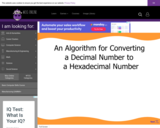
In this animated activity, learners examine a systematic method for converting a decimal number (base 10) into a hexadecimal number (base 16).

In this animated object, learners examine a systematic method for converting a decimal number (base 10) into an octal number (base 8).
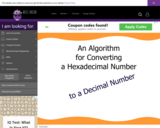
In this animated and interactive object, learners follow two methods for converting a hexadecimal number to a decimal number. They test their knowledge in exercises at the end of the learning object.

Learners examine two methods for converting an octal number to a decimal number. Exercises are provided at the end of the learning object.

Students use the Base Minus One Complement method to perform hexadecimal subtraction.

Learners use the Base Minus One Complement method to do octal subtraction.

In this animated object, learners follow the steps for solving word problems using algebra. An introductory example is explained.

The student calculates the determinant of a 2x2 matrix.
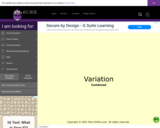
This learning object walks the student through a combined variation problem.

This lesson visually guides the learner step by step through the process of 'completing the square' as a method of solving quadratic equations.

Students solve systems of two linear equations in two unknowns by determinants.

The student evaluates the determinant of a 3 X 3 matrix.

This learning object walks the student through a direct variation problem.

Learners follow step-by-step instructions for dividing algebraic fractions. They begin by reducing the fractions to their simplest form. Immediate feedback is provided. This activity has audio content.

Students evaluate the Sine, Cosine, and Tangent ratios of a right triangle.
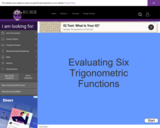
Students evaluate the six trig functions using a scientific calculator.

The learner factors an algebraic expression of the form AX(Squared) + BX + C, where the coefficient of the X squared term is not equal to 1.
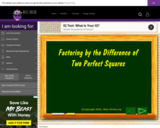
In this interactive object, students work problems using the difference of two perfect squares.

Students use trigonometry to find the coordinates of the blending point where a line and an arc meet. Learners are given the coordinates of the center of the arc, the radius of the arc, and the direction of the line.